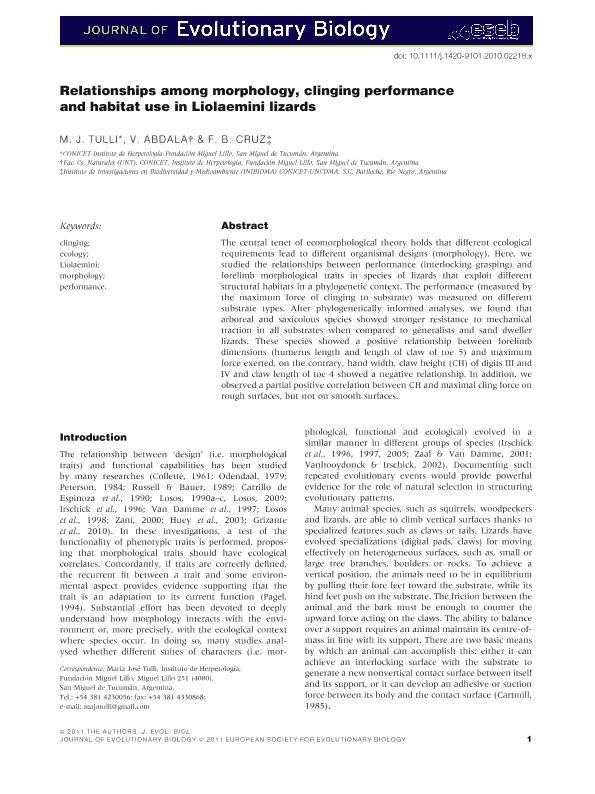Artículo
Relationships among morphology, clinging performance and habitat use in Liolaemini lizards
Fecha de publicación:
01/2011
Editorial:
European Society for Evolutionary Biology
Revista:
Journal of Evolutionary Biology
ISSN:
1420-9101
Idioma:
Inglés
Tipo de recurso:
Artículo publicado
Clasificación temática:
Resumen
The central tenet of ecomorphological theory holds that different ecological requirements lead to different organismal designs (morphology). Here, we studied the relationships between performance (interlocking grasping) and forelimb morphological traits in species of lizards that exploit different structural habitats in a phylogenetic context. The performance (measured by the maximum force of clinging to substrate) was measured on different substrate types. After phylogenetically informed analyses, we found that arboreal and saxicolous species showed stronger resistance to mechanical traction in all substrates when compared to generalists and sand dweller lizards. These species showed a positive relationship between forelimb dimensions (humerus length and length of claw of toe 5) and maximum force exerted, on the contrary, hand width, claw height (CH) of digits III and IV and claw length of toe 4 showed a negative relationship. In addition, we observed a partial positive correlation between CH and maximal cling force on rough surfaces, but not on smooth surfaces.
Palabras clave:
Clinging
,
Ecology
,
Liolaemini
,
Morphology- Performance.
Archivos asociados
Licencia
Identificadores
Colecciones
Articulos(CCT - NOA SUR)
Articulos de CTRO.CIENTIFICO TECNOL.CONICET - NOA SUR
Articulos de CTRO.CIENTIFICO TECNOL.CONICET - NOA SUR
Citación
Tulli, María José; Abdala, Virginia Sara Luz; Cruz, Felix Benjamin; Relationships among morphology, clinging performance and habitat use in Liolaemini lizards; European Society for Evolutionary Biology; Journal of Evolutionary Biology; 24; 4; 1-2011; 843-855
Compartir
Altmétricas




